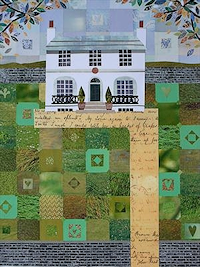Keats House
The home of romance
Keats House, Hampstead

John Keats was born in the City of London in October 1795 and christened at St Botolph’s in Bishopsgate. His father Thomas managed the livery stables attached to the Swan and Hoop, a large and thriving inn on Finsbury Pavement owned by John’s maternal grandfather John Jennings.
Whether Keats was born at the stables or at the family’s unidentified home nearby is still a matter of debate but modern academics broadly agree that his origins were not as humble as used to be supposed (and romanticised).
Nevertheless, Keats undoubtedly came from a much less wealthy and high-bred family than many of the aristocratic poets of the day and, at the time his verse was first published, he was subjected to mockery by a few snobs of the London literary set, who accused him of pairing words that sounded like rhymes only to the ears of cockneys.
At an early age John Keats was sent away to a boarding school in Enfield, where he first took an interest in classical literature. In 1803 his father died after a fall from his horse while (it is said) riding back to London after visiting his son.
Keats’s mother Frances died in 1810 and a few months later he left school and entered an apprenticeship with an apothecary-surgeon in Edmonton. Though he completed his training (including a year at Guy’s Hospital) and qualified as a medical professional, he soon decided to devote himself to poetry and began to achieve wide recognition in 1818. In December of that year Keats went to lodge with his friend Charles Brown in the smaller of a pair of newly-built Hampstead houses then called Wentworth Place. It was here that he wrote many of his best-known poems and fell in love with the girl next door, Fanny Brawne.
In February 1820 Keats began to exhibit the first symptoms of tuberculosis and was confined to the house during the months that followed. In Brown’s parlour (shown in the photograph below) a sofa bed was made up for him so that he could look out of the window at the garden.
When summer waned Keats travelled to Naples and then Rome in the vain hope that the warmer, drier climate might improve his health. He died at a villa on the Spanish Steps on 23 February 1821 and was buried in Rome’s Protestant Cemetery. Fanny Brawne went into mourning when news of her lover’s death reached her and, according to some sources, she wore widow’s weeds for six years.
Wentworth Place was opened to the public as a memorial to John Keats in 1925 and is cared for by the City of London Corporation. Now called Keats House, its collection of memorabilia includes books, paintings, letters, keepsakes and the engagement ring Keats gave to Fanny.
Even diehard independent explorers of such places should overcome their resistance to being herded around and take the guided tour here, to better appreciate the significance and context of each room, its furnishings and decor, and the material on display.
Group tours can be booked for days when the house is closed to the general public. Special events are frequently arranged, including talks, poetry readings, musical soireés, children’s storytelling and creative workshops. For more information, see the Keats House Museum’s lively Facebook page.


